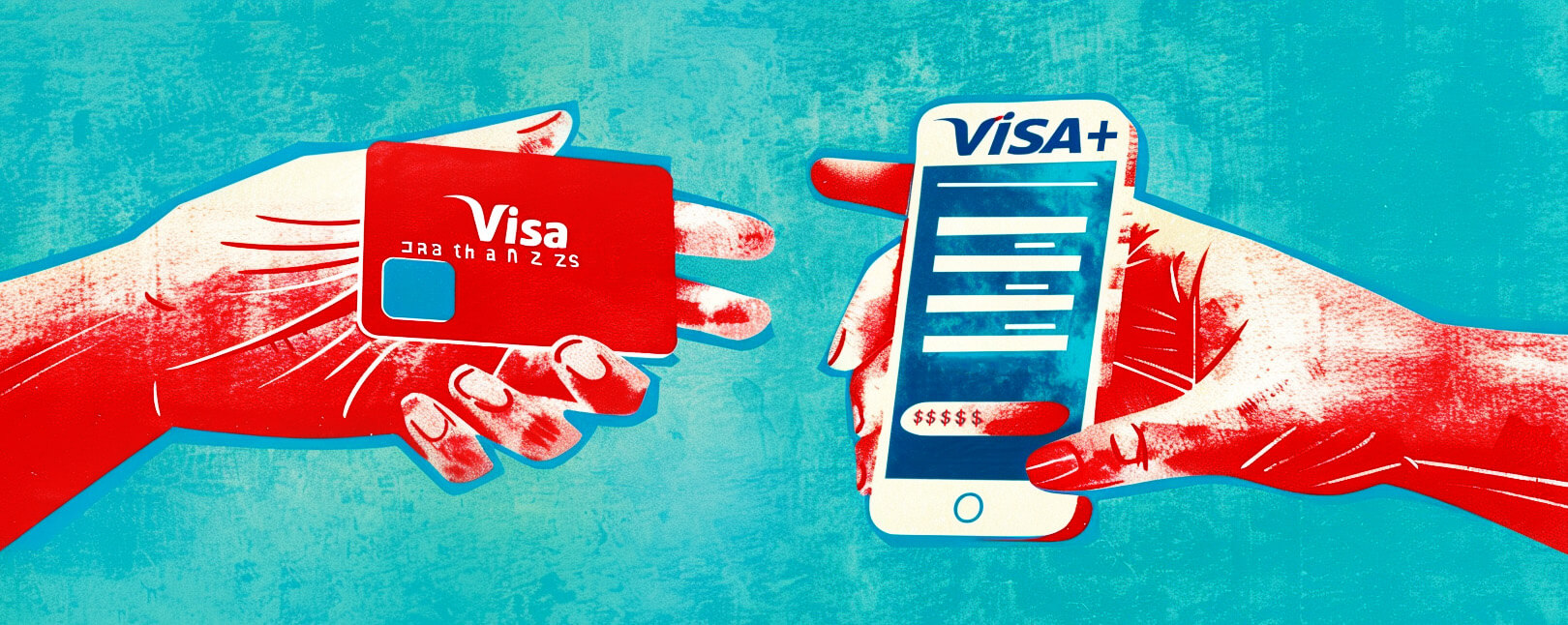Impacts of ISO 2022: Will Your Business Feel a Pinch?
Banks and financial institutions are set to experience a seismic shift.
The SWIFT network that traditionally facilitated payments is giving way to the next-generation ISO 20022 financial messaging standard. This new standard is expected to be the singular, global standard governing high-value payment systems for all reserve currencies. It is projected to underpin 80% of global transaction volumes and an overwhelming 87% of transaction value by the end of this year.
The European Central Bank and SWIFT declared ISO 20022's official launch date nearly a year ago, and the system is now live. But, what on earth is this ISO 20022? Why should you care? More crucially, how will it impact your business operations in the mid- to long-term sense?
Recommended reading
- How to Use a Contactless ATM & Where to Find Enabled Devices
- Terminal ID Number (TID): What is it? What Does it Do?
- What is EMV Bypass Cloning? Are Chip Cards Still Secure?
- Dispute Apple Pay Transaction: How Does The Process Work?
- Visa+: Get the Most Out of Digital Wallets With This Tool
- Mastercard Installments: How Mastercard BNPL Works
What is ISO 20022?
- ISO 20022
ISO 20022 is an international messaging standard for financial institutions. It was designed to provide a standardized method for sending messages and exchanging payment data using both Latin and non-Latin characters.
[noun]/ī • es • ō • tü • zee • rō • zee • rō • tü • tü/ISO 20022 is more than just an upgrade; it's a data-rich, highly structured, and incredibly flexible messaging platform. Though ISO (International Organization for Standardization) first launched ISO 20022 in 2004, it's only recently that this messaging standard has truly started to make waves.
For banks and financial institutions scattered around the world, the adoption of ISO 20022 is a game changer. It's as tool for better communication, providing a means to transmit more accurate data. That’s why financial institutions are now pivoting away from the antiquated SWIFT MT network and onto the more sophisticated platform.
Why is ISO 20022 Being Adopted?
As the world hurtles deeper into the digital age and global connectivity expands, the call for superior information processing and seamless communication grows ever louder.
Historically, major banks and financial institutions have crafted and enforced their own communication standards, often without collaboration or oversight. As you can imagine, this approach has led to discrepancies in messaging. This stifles international dialogue and impedes global commerce.
Introducing an international messaging standard is one way to simplify and improve communication between domestic and international agencies. It speeds up the data sharing process. This is done by including a wide array of syntax and semantics from various languages into a shared codex.
The system uses a standard modeling methodology and a series of Extensible Markup Language (XML) and Abstract Syntax Notation (ASN.1) protocols. It offers translated syntax and semantics for non-Latin alphabets. It effectively bridged communication gaps in the international finance landscape. Moreover, a standardized messaging framework makes it easier to establish and manage partner relationships.
6 Immediate Benefits of ISO 20022
ISO 20022 serves as a universal language and operations blueprint for the payments industry. Imagine banks and processors transmitting and receiving standardized payment data across international borders; that’s the aim.
ISO 20022 operates as a democratized system, free of control from any single entity. It thrives on constant evolution and refinement, making it a reliable addition to any network. Consider these key advantages:
ISO 20022 & the FedNow Service
The sweeping adoption of the ISO 20022 messaging standard and its structured data perks made it the central inspiration for the Federal Reserve's cutting-edge instant payments framework: the FedNow Service.
With FedNow, users linked to participating banks and credit unions can send and collect funds in the blink of an eye every single day. Contrast this with online transfers through the Automated Clearing House (ACH) Network operating in batch mode, which typically take one to three business days to wrap up. This means transactions are no longer confined by conventional banking hours or left in limbo during weekends and holidays.
FedNow is primed to facilitate:
- Peer-to-peer transactions (P2P)
- Consumer-to-business payments (C2B)
- Consumer-to-government payments (C2G)
- Government-to-consumer payments (G2C)
- Business-to-consumer payments (B2C)
- Business-to-business transactions (B2B)
- Business-to-government payments (B2G)
- Transfers between an individual's own accounts (A2A)A brand new checklist item
ISO 20022 was engineered with the future in mind, and is designed to keep pace with evolving innovation needs. It's equipped to back FedNow as it matures and expands its capabilities.
How is Adoption Progressing?
ISO 20022 has been rolling out incrementally for several years already. While the protocol officially went live as of March 2023, progress has been slow.
In the coming months, the previous “MT” messaging standard will be supported for reverse compatibility purposes only. This means financial institutions really need to begin integrating ISO 20022 standards as soon as possible.
Until the full migration deadline in November 2025, financial institutions must at least be ready to receive ISO 20022 payment messages for cross-border payments and reporting (CBPR+).
All that said, why has it taken almost twenty years to implement this goldmine of benefits? And, why have so many financial institutions been slow to adopt the new standard?
ISO 20022 Implementation Challenges
With a system overhaul as broad and deep as ISO 20022, there were bound to be some hiccups along the way. The most crucial is the implementation itself.
Switching to a new system requires time, training, testing, and constant troubleshooting. And, with the November deadline fast approaching, concerns related to the system migration are manifold:
Lastly, even though this system was initially introduced over 20 years ago, the financial establishment does not move swiftly or integrate unilaterally. Customers rely on banks for stability and dependability at all times. This further exacerbates the banks’ efforts to innovate in the era of instant gratification.
Standardization and improved digital communication are necessary to stabilize the financial marketplace and commerce. However, institutions are still urged to update their software at the earliest opportunity.
ISO 20022 Mandatory? When is the ISO 20022 Deadline?
In truth: not yet. It will be mandatory soon, though.
While not explicitly mandatory, November 2022 marked the beginning of a coexistence period. Standard SWIFT MT messages are currently accepted alongside ISO 20022 messages. However, the adoption of ISO 20022 messages for SWIFT cross-border payments and cash management messages (CBPR+) must be complete by November 2025.
It’s in the best interests of all financial institutions to implement and test before the as soon as possible. Their existing products and services could become inoperable the longer they fail to act.
How Does ISO 20022 Impact Merchants?
While this doesn’t directly impact merchants, per se, it is something to keep an eye on for the foreseeable future.
Banks and processors may adjust merchant dispute rules and regulations to comply with the new standard. Dispute time limits, in particular, could be impacted. This could affect business practices, customer experience… and your bottom line.
Ultimately, increased standardization across the financial ecosystem is bound to improve merchant interaction with banks and processors. Faster data transmission and reception are good, especially when combined with uniform rules and regulations. That said, there will be a learning curve associated with the incoming changes.
Wouldn’t it be great if you had access to industry insiders who speak the banks’ language? Not to worry: we can help.
Chargebacks911® offers the most comprehensive chargeback and dispute management services and products available today. Contact us today for an expert perspective on the ISO 20022 switch.
FAQs
What is ISO 20022?
ISO 20022 is an international messaging standard for financial institutions. ISO 20022 was designed to provide a standardized method for sending messages and exchanging payment data. The system uses a standard modeling methodology and a series of Extensible Markup Language (XML) and Abstract Syntax Notation (ASN.1 ) protocols.
What happens when ISO 20022 goes live?
ISO 20022 is live as of March 2023, and full migration is slated for 2025. In the coming months, the previous “MT” messaging standard will be supported for reverse compatibility purposes only. This means financial institutions really need to begin integrating ISO 20022 standards as soon as possible.
What cryptocurrencies are ISO 20022?
Ripple (XRP), Quant (QNT), Algorand (ALGO), Stellar (XLM), Hedera HashGraph (HBAR), IOTA (MIOTA), and XDC Network (XDC) are all compatible with ISO 20022.
Does ISO 20022 replace SWIFT?
Yes. In effect, ISO 20022 will replace conventional SWIFT messaging.
What is the benefit of ISO 20022?
Upon global adoption, ISO 20022 will birth a universal language and operations blueprint for the payments industry. Imagine banks and processors transmitting and receiving standardized payment data across international borders.














